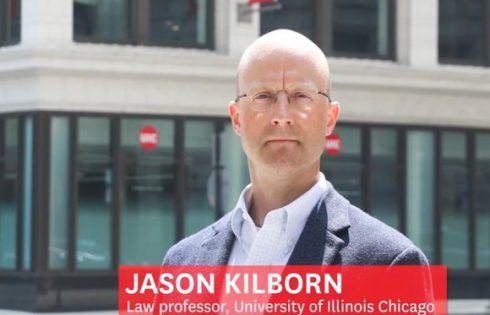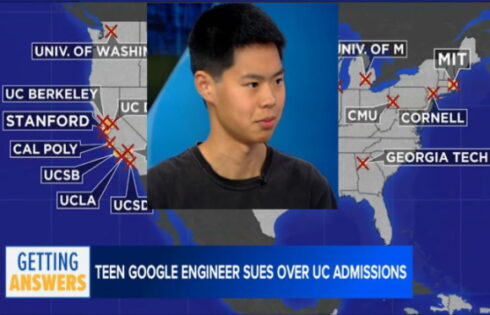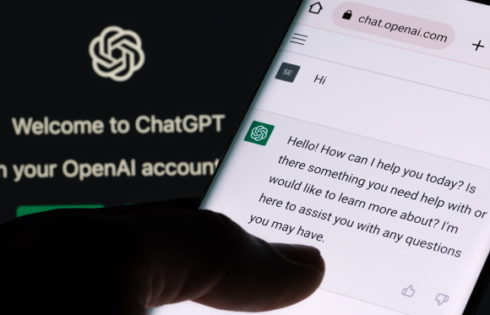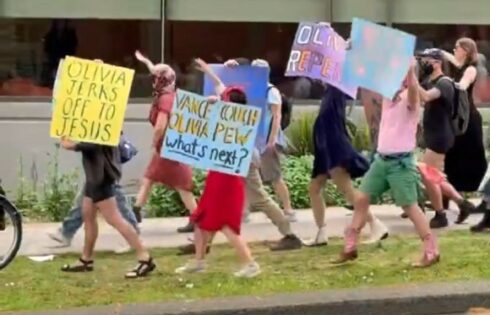
If an attendee of a virtual meeting has an image of their heterosexual wedding as his or her virtual background, they are committing a microaggression.
So says a pair of researchers in a Michigan State University press release.
According to MSU’s Amy Bonomi, director of the university’s Children and Youth Institute, and Neila Viveiros, associate vice chancellor for academic operations at the University of Colorado Denver, the expanded use of virtual meeting platforms such as Zoom and Skype has created “a ripe setting for unconscious bias.”
This includes setting your background to an image of your wedding.
“Unconscious bias includes using language, symbolism and nonverbal cues that reinforce normative social identities with respect to gender, race, sexual preference and socioeconomic status,” Bonomi said. “For example, when the virtual background of a Zoom meeting attendee has pictures of his or her wedding, it unintentionally reinforces the idea that marriage is most fitting between opposite sexes.”
Bonomi serves on the faculty of Michigan State’s Human Development and Family Studies department.
U. Colorado’s Viveiros said even something as simple as an icebreaker asking people what the “most fun thing you’ve done with your family during quarantine” could be a microaggression. She recounted a recent meeting where people cited simple activities like family dance parties and gardening with a spouse.
The report notes that “[w]hile these experiences are valid […] they can crowd out the experiences of people with minoritized social identities. For example, asking about ‘fun family things’ prevented several Latinx attendees from sharing their experiences of losing family members to novel coronavirus.”
Viveiros and Bonomi said the way to combat such microaggressions is to “use inclusive language,” be wary of “symbolism,” “challenge microaggressions,” and add frequent breaks to any virtual meeting by establishing “time bounding.”
Approach conversations with sensitivity to differences. Instead of opening with the typical “tell us what your lives are like during shelter in place,” consider framing a question around what participants are noticing about communities around them.
“Meeting hosts need to prepare follow-up questions, like whether participants know anyone going through this crisis alone,” Viveiros said.
Symbolism. Be conscious about what your “virtual environment” might symbolize. It’s unlikely that in face-to-face meetings, participants be seated in front a wall of family photos. While virtual backgrounds may be a way for participants to express themselves, it is important to understand who is being excluded and included with these types of actions.
“To mitigate the potential of exclusion, some organizations are guiding participants to consider background choices to reflect the organization’s values, as opposed to personal choice,” Bonomi said.
Bonomi and Viveiros also encouraged being a “strategic ally” by calling out microaggressions either when they occur or later in private: “It is important to share how the microaggression affected you and may have affected others and to provide tools for improving skills.”
Added Bonomi: “Without paying attention to how unconscious bias and how dominant paradigms get reinforced, we risk unintentionally alienating and potentially harming minoritized people.”
MORE: University fires prof for calling microaggressions handout ‘garbage’
MORE: ‘Microaggressions’ professor: ‘Not everything is a microaggression’
IMAGE: Tashatuvango / Shutterstock.com
Like The College Fix on Facebook / Follow us on Twitter





Please join the conversation about our stories on Facebook, Twitter, Instagram, Reddit, MeWe, Rumble, Gab, Minds and Gettr.